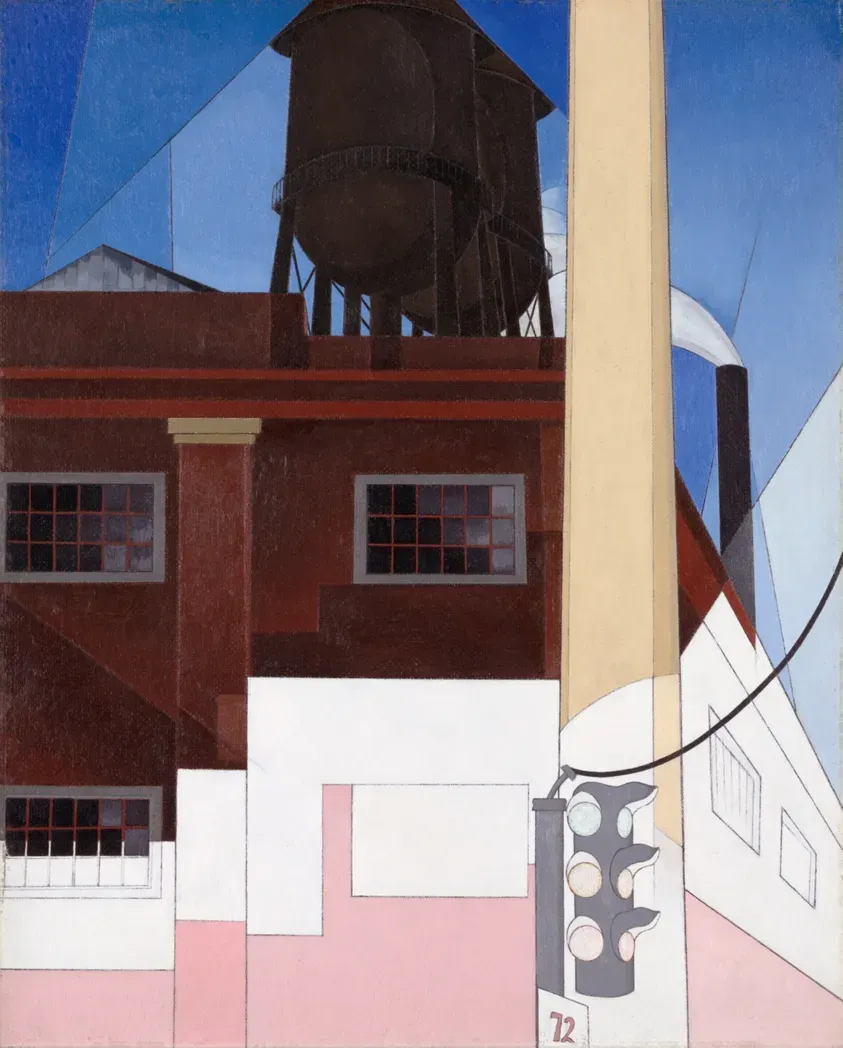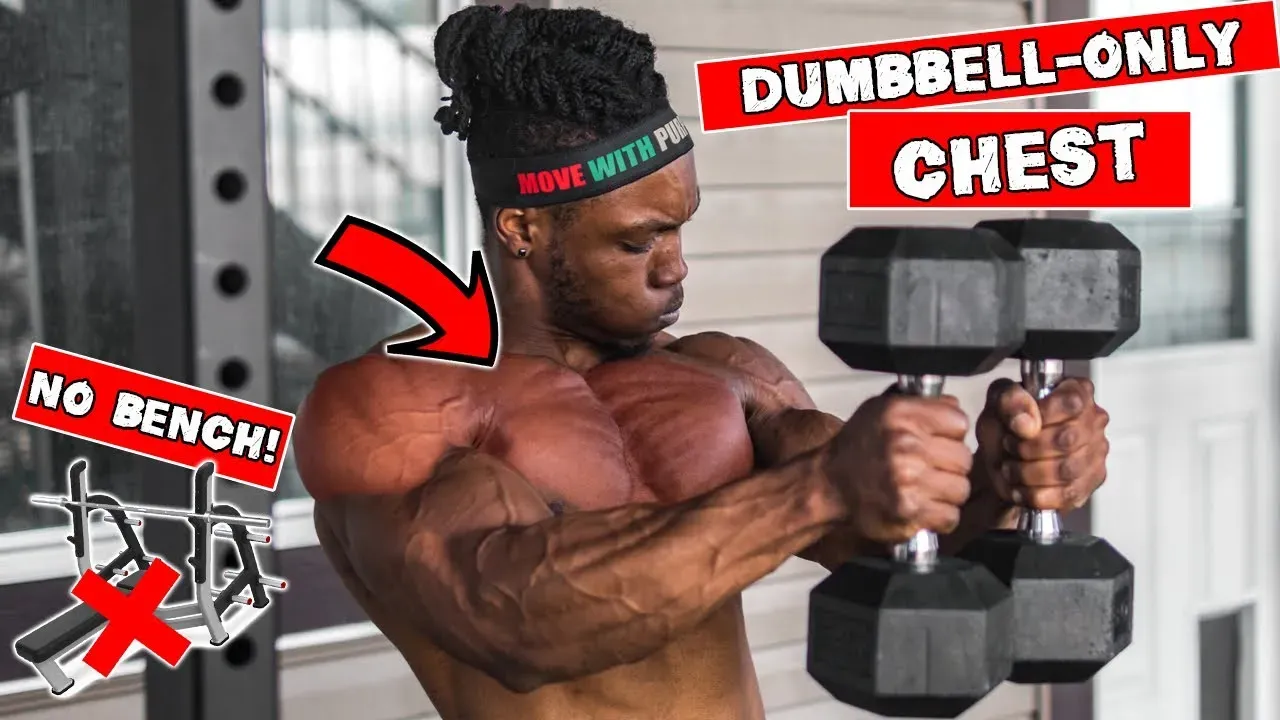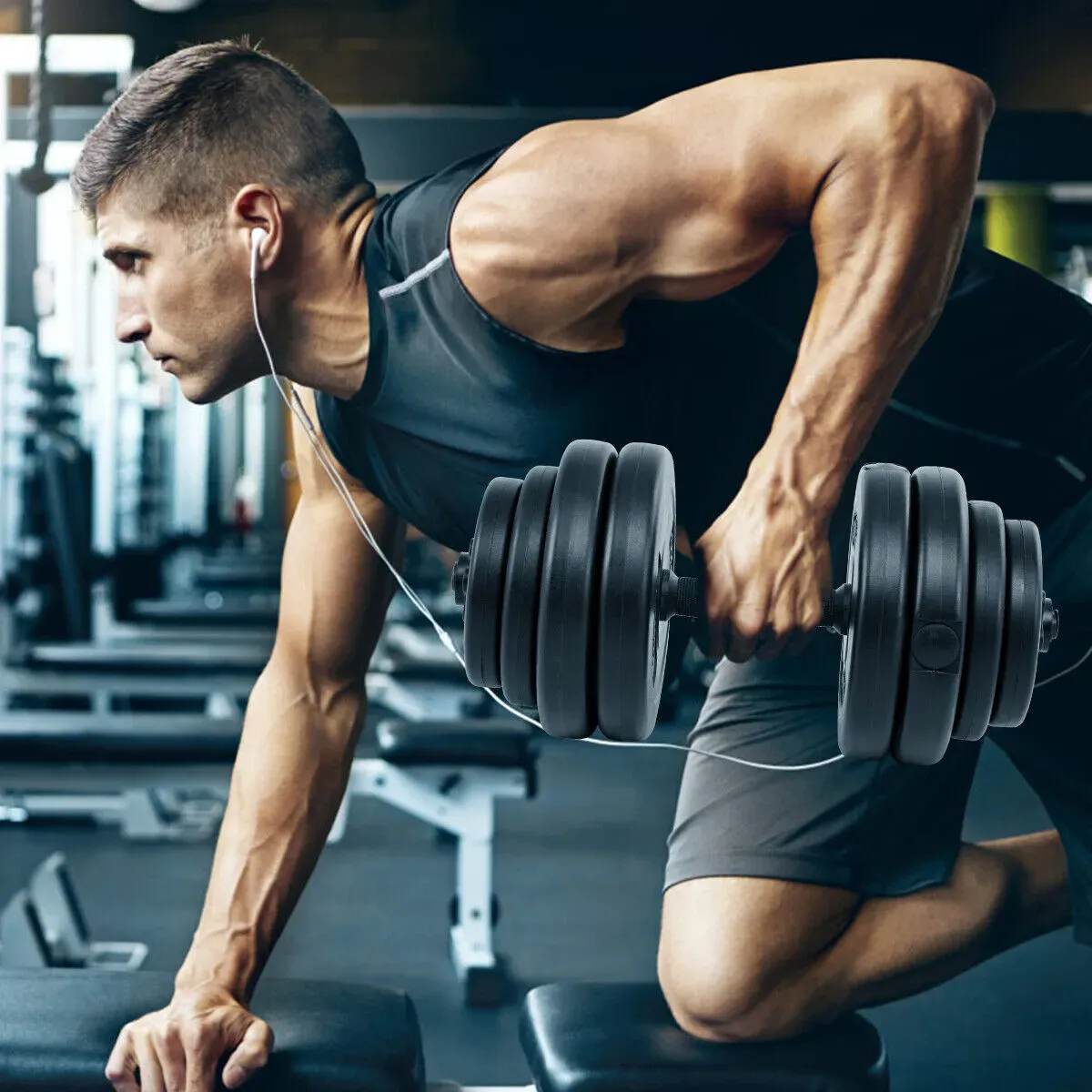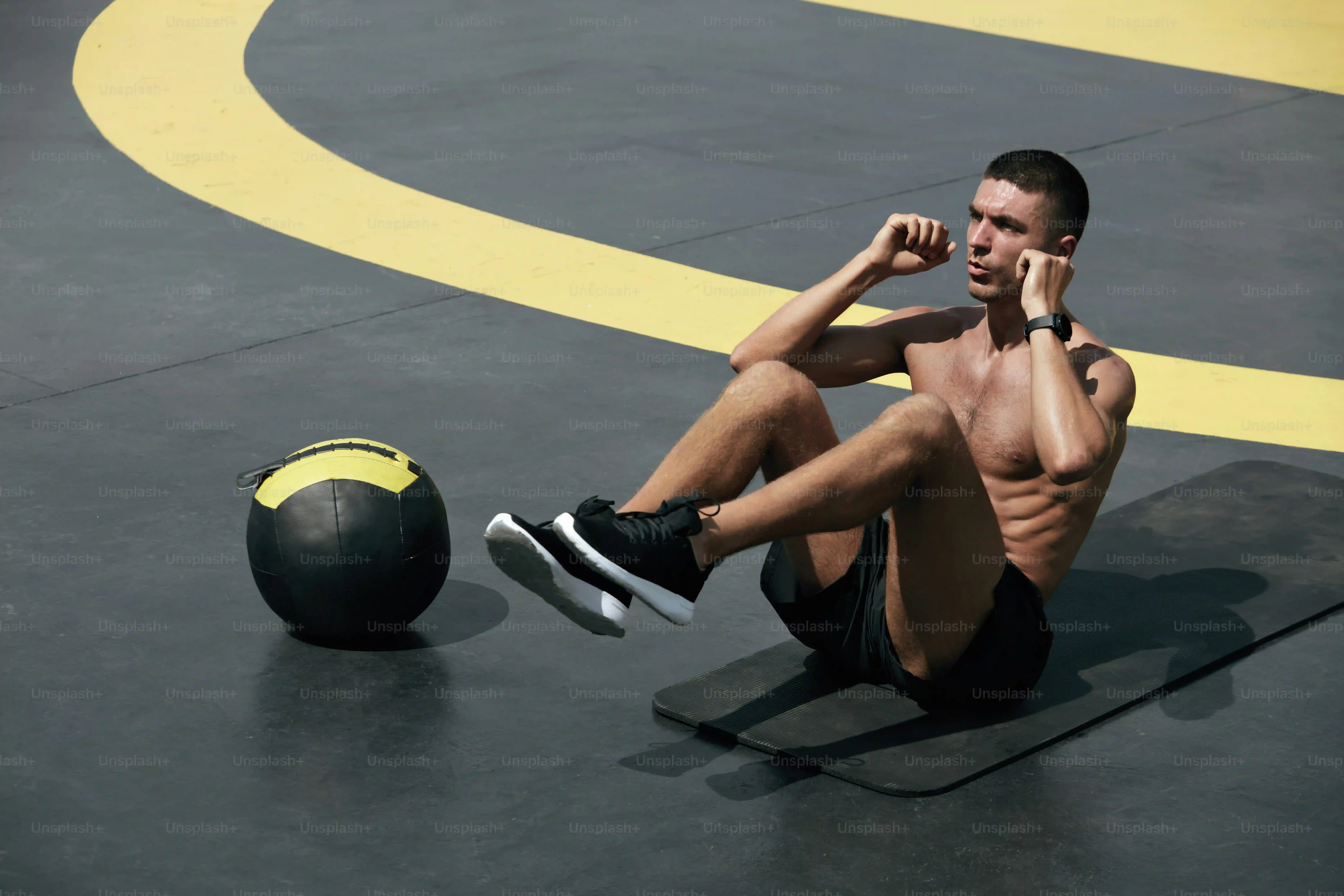Table of Contents
Maybe the gym scene isn't for you, or perhaps life just makes getting there a logistical nightmare. You still want a solid chest, something beyond just pushing the grocery cart. Can you really build noticeable pec muscles just using dumbbells in your living room?
Why Choose an At Home Chest Dumbbell Workout?

Why Choose an At Home Chest Dumbbell Workout?
Skip the Commute, Get the Gains
Let's be real. Getting to the gym can be a drag. Traffic, finding parking, waiting for equipment – it all adds up and can kill motivation faster than a bad spotter. An at home chest dumbbell workout eliminates all that friction. You roll out of bed, grab your weights, and you're ready to go. It's about fitting fitness into your life, not building your life around fitness.
This convenience means you're far more likely to actually do the workout consistently. Consistency is the unsung hero of muscle growth. It doesn't matter how perfect a program is if you only do it sporadically because getting to the facility is a pain. With dumbbells at home, your gym is always open, always available, and always ready when you are.
Dumbbells Offer Unique Advantages
Sure, barbells are great for moving heavy weight, but dumbbells offer something different: unilateral training and a greater range of motion. Each side of your chest has to work independently, which helps identify and fix muscle imbalances. Ever notice one pec is slightly bigger or stronger than the other? Dumbbell work can help even that out.
The free movement also allows you to lower the weights deeper on exercises like presses and flyes compared to a barbell or some machines. This deeper stretch can stimulate more muscle fibers and potentially lead to better growth over time. You're not locked into a fixed path, letting your joints move more naturally and often feeling better on the shoulders.
- Ultimate convenience and time-saving
- Greater consistency potential
- Improved muscle balance
- Increased range of motion for deeper stretches
- Joint-friendly movement paths
Cost-Effective and Private
Gym memberships cost money. Dumbbells, while an upfront investment, last forever and don't come with monthly fees. A decent set of adjustable dumbbells might seem pricey initially, but compare that to a year or two of gym dues, and the math usually works in favor of the home setup. Plus, you don't have to worry about gym etiquette, wiping down machines (though you should wipe your own!), or feeling self-conscious if you're new or still learning.
Your living room is your private training sanctuary. You can grunt, sweat, and focus entirely on your at home chest dumbbell workout without any distractions or judgmental stares. It's just you, the weights, and the work. This can be a huge confidence booster for many people starting their fitness journey or those who simply prefer solitude while training.
Essential Dumbbell Exercises for a Strong Chest

Essential Dumbbell Exercises for a Strong Chest
Mastering the Dumbbell Press
Alright, so you've got your dumbbells. Where do you even start for an at home chest dumbbell workout? The absolute cornerstone, the bread and butter, is some form of dumbbell press. Think of it as your main muscle builder. You can do this lying on the floor – the floor press limits your range of motion slightly but is safer if you're lifting heavy alone. Or, if you have a bench (even a sturdy chair or ottoman can work in a pinch, though be careful!), you can do the full dumbbell bench press.
Grab a dumbbell in each hand, lie back, and lower the weights slowly to the sides of your chest. Keep your elbows at about a 45-degree angle to your body – don't let them flare straight out like airplane wings. Push the dumbbells straight up, squeezing your chest at the top. Control the weight both up and down. Don't just drop it. This controlled movement is key for building muscle and preventing shoulder issues.
Adding the Dumbbell Fly
Once you've hit the presses, you want to target the chest from a different angle and really focus on that stretching and squeezing motion. That's where the dumbbell fly comes in. Again, you can do this on the floor or a bench. Hold a dumbbell in each hand with a slight bend in your elbows, palms facing each other.
Lower the weights out to the sides in a wide arc, feeling the stretch across your chest. Don't let your elbows lock out or drop the weights too low where it puts stress on your shoulders. Bring the weights back up in the same arc, squeezing your chest muscles together at the top as if you're hugging a barrel. This isn't about lifting heavy; it's about controlled movement and feeling the muscle work. It's a fantastic addition to any home chest workout with dumbbells.
Common Mistakes to Avoid:
- Using weights that are too heavy, sacrificing form.
- Rushing through reps instead of controlling the movement.
- Letting elbows flare too wide during presses.
- Dropping weights too low during flyes, straining shoulders.
- Ignoring the mind-muscle connection – focus on feeling the chest work.
Structuring Your At Home Chest Dumbbell Workout Routine

Structuring Your At Home Chest Dumbbell Workout Routine
so you've got the exercises down – the presses and the flyes are your bread and butter for an at home chest dumbbell workout. Now, how do you actually put them together into something that makes sense and gets results? Think of it like building a playlist for your workout; you need a good flow. A common structure involves choosing a few key exercises and hitting them for a specific number of sets and repetitions. For building muscle, aiming for 3-4 sets per exercise with reps in the 8-12 range is a solid starting point. Don't just pick random weights; choose dumbbells where the last couple of reps in each set feel genuinely challenging, like you're pushing yourself but still maintaining good form. It's better to do fewer reps with proper technique than more sloppy ones.
Maximizing Your Chest Gains with Dumbbells at Home

Maximizing Your Chest Gains with Dumbbells at Home
Pushing Past Plateaus: Progressive Overload is King
you've got your routine down for your at home chest dumbbell workout. You're hitting presses and flyes, feeling the burn. But after a few weeks, things might start feeling... easy. This is where a lot of people stall. Muscle growth happens when you consistently challenge your muscles beyond what they're used to. It's called progressive overload, and it's non-negotiable if you want to keep seeing gains.
How do you do it with just dumbbells at home? The most obvious way is to increase the weight. If you have adjustable dumbbells, great. If not, you might need to invest in heavier ones over time. But weight isn't the only way. You can also do more reps with the same weight, add an extra set, shorten your rest times between sets, or slow down the negative (lowering) portion of the exercise to increase time under tension. Pick one method and focus on improving it each week or every other week.
Vary Your Angles, Vary Your Stimulus
Your chest isn't just one big muscle; it has different fibers that respond best to different angles. While the flat press and fly are crucial, don't neglect incline and decline angles if you have a bench that adjusts. An incline dumbbell press targets the upper chest, which is often a weak point for many. Decline work can help hit the lower chest. Even subtle changes in your body position on the floor can shift the emphasis slightly.
Beyond presses and flyes, consider other dumbbell movements. A dumbbell pullover, while hitting the lats, also provides a deep stretch for the chest and can work those often-neglected fibers. Experiment with grip width on your presses. Find what angles and exercises you feel the best contraction with and incorporate them consistently into your at home chest dumbbell workout.
- Incline Dumbbell Press (Targets Upper Chest)
- Decline Dumbbell Press (Targets Lower Chest)
- Dumbbell Pullover (Stretches Chest, Works Lats)
- Floor Press (Good for shoulder safety)
Recovery and Fueling Your Growth
You don't build muscle when you're lifting the weights; you build it when you're recovering from lifting them. Your at home chest dumbbell workout breaks down muscle fibers, and rest and nutrition are what repair and build them back stronger. Make sure you're getting enough sleep – aim for 7-9 hours a night. This is when your body does most of its repair work.
Nutrition is the other half of the equation. You need protein to rebuild muscle tissue. Aim for around 0.7 to 1 gram of protein per pound of body weight daily. This doesn't mean you need fancy supplements, though they can be convenient. Lean meats, fish, eggs, dairy, beans, and lentils are excellent sources. Don't neglect carbs and healthy fats either; they provide the energy you need for your workouts and overall bodily functions. Consistently pushing yourself with your dumbbells at home won't yield results if you're not giving your body the building blocks and rest it needs.
Your At Home Chest Gains Await
So there you have it. Building a strong, well-defined chest doesn't require a fancy gym membership or hauling heavy barbells. With just a set of dumbbells and the right approach, your at home chest dumbbell workout can be every bit as effective, if not more so, due to the control and range of motion dumbbells offer. We've covered the core movements, how to string them together into a routine, and ways to keep pushing your limits. Consistency is key, along with smart progression and listening to your body. Stop making excuses about not having access to a gym. Your living room is now your training ground. Get to it.
